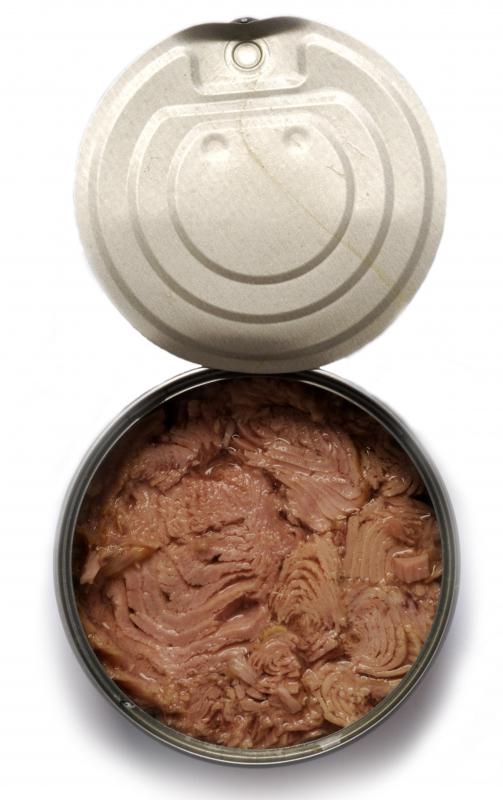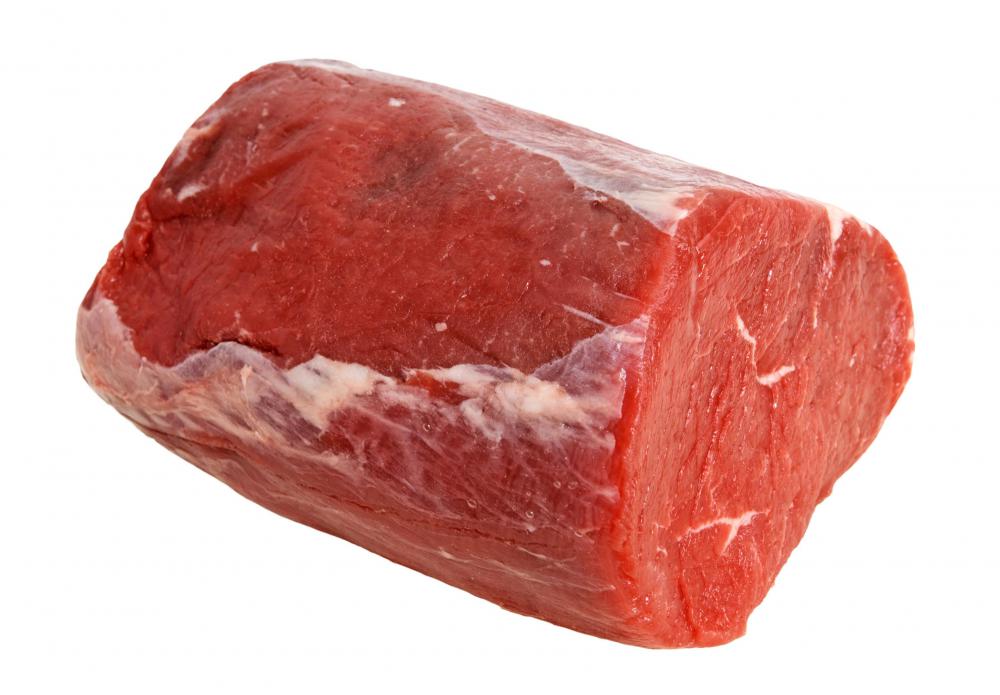At DelightedCooking, we're committed to delivering accurate, trustworthy information. Our expert-authored content is rigorously fact-checked and sourced from credible authorities. Discover how we uphold the highest standards in providing you with reliable knowledge.
What Are Tuna Loins?
Tuna, or tunny, loins are the largest cuts of meat that processors cut from a whole tuna fish. There are four loins on each fish: two dorsal loins and two belly loins. Several species of tuna are popular, such as the albacore, yellow fin, and ahi big eye tuna. Depending on the species, processors may label the tuna as solid white or solid light. Some food experts advise that a cook take special care while handling raw or frozen tuna loins, including using thawed fish within two to three days.
The dorsal loins are located on the top part of the fish. Each begins behind the head and continues to the tail, running on each side of the spine. The belly loins are located between the pelvic and anal fins on the lower part of the fish. Like the dorsal loins, there is one on each side of the fish. Generally, processors use chunks of meat for canned tuna unless marked differently, and they use scraps, skin, and other waste to make pet food, especially cat food.

Companies may can tuna loins or sell them fresh or frozen. Many processors prefer to precook the tuna in the whole form because it is easier to skin and debone the cooked tuna. They place the cooked tuna into cans and process it to seal the can. Regulations stipulate that the label must reflect the type of tuna, either solid or chunk and either white or light. Albacore tuna is white meat tuna, and other species, primarily yellow fin and skipjack, are light meat.

Experts suggest using fresh tuna or thawed fresh tuna within two days, especially if the cook is using the tuna for a raw fish dish, such as sashimi or sushi. Some people label their fish as sushi-grade, but there are no standards for this labeling. A buyer should ask the vendor how the fresh tuna loins have been handled. Some processors freeze the tuna loins for seven days at -7°F (-21.7°C) or flash freeze them for 15 hours at -31°F (-35°C) to kill parasites; others do not believe this is necessary and argue that it affects the flavor and texture.

Another tip that food experts give is that rinsing saltwater fish with fresh water may cause the fish to get rubbery and turn brown. Some cooks rinse saltwater fish in salted water, but most experts say that it is not important to rinse tuna loins. When buying fresh fish, the flesh should be firm and glistening. Fish with dull flesh that is falling apart is old and buyers should not purchase it. Experts advise that quick frozen fish is better than bad fresh fish, and generally tuna loins thaw in eight 10 hours in the refrigerator.

Cooks may prepare tuna loins in a variety of ways. Tuna are strong swimmers, and the firm muscular texture of the meat lends itself to pan searing or grilling. Other cooking methods include steaming, baking, and broiling. Often people serve it raw, such as the Oriental sashimi style, or grilled rare. Overcooking the tuna loins often causes them to be dry, and many people believe it adversely affects the flavor too.
AS FEATURED ON:
AS FEATURED ON:
















Discussion Comments
Tuna loins are also fabulous on the grill. Just marinade them for about an hour in your favorite mixture, and place them on the grill until they cook to your liking.
My favorite albacore tuna loin recipe is to bake them with a variety of seasonings and vegetables.
First I rinse the loins, even though some cooks say you shouldn't do this to tuna. I have never had any problems with bad textures after rinsing the loins. Next I rub them down with olive oil and herbs and spices. You can use any type of oil and seasonings you prefer, but I like to use olive oil because of its robust flavor. When it comes to herbs and spices, I use a combination of cilantro, thyme, rosemary, oregano, salt, and pepper.
For my next step in this recipe, I place the tuna loins in a pan with about one cup of water. I cut up the vegetables and place them around the fish. Finally, I put the pan in the oven and bake the meal at 375 degrees Fahrenheit for 45 minutes.
Post your comments